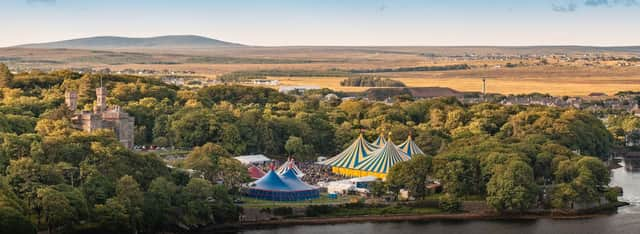Area focus: Stornoway


The annual four-day-long international Hebridean Celtic Festival, or HebCelt, kicked off yesterday, and is presenting a hybrid of live and digital performances dubbed the “Survival Sessions”.
A limited audience at the Stornoway arts centre, An Lanntair, can watch performances by Saltfishforty, Colin Macleod and Staran, among others, while32 hours’ of pre-recordings, the streaming of commissions and workshops, with an exclusive special from the Red Hot Chilli Pipers, will also be available.
Advertisement
Hide AdAdvertisement
Hide AdAnd there is no better place for such a celebration, as Stornoway is considered by many as a creative hub for the arts and the island’s Gaelic heritage.
The Isle of Lewis forms the northern half of Lewis and Harris, and Stornoway, on the east coast, is by far its biggest town with a population of some 5,000.
The settlement was founded on a natural harbour in the 9th Century by the Vikings, who named it Stjórnavágr, which is Old Norse for “steering bay”.
They controlled the island until the 1200s, but conflict among Scotland’s clans was rife here throughout the Middle Ages.
During the 16th Century, the island was ruled over by the MacLeods, who fought off King James VI’s “Fife Adventurers” who had been dispatched to remove Gaelic-speaking inhabitants. Unsuccessful in this goal, the Adventurers gave up after three attempts.
By the mid-1800s, Stornoway had developed a thriving fishing industry and was famed for its herring. The town’s harbour became a major centre for ship building, and up to 6,000 fishermen worked through the port.
Today, Stornoway’s harbour is much smaller, but still retains a fishing fleet. It also has a marina for pleasure boats and a small shipyard.
In recent years, the town’s economy has come to depend on fishing, farming, the oil industry, and tourism.
Advertisement
Hide AdAdvertisement
Hide AdWhile the Isle of Lewis is a popular destination in the summer, those who can thrive in its remote wilderness during the rest of the year will benefit from attractive property prices.
According to Zoopla, a property in Stornoway costs an average of £129,344, and it reveals that Goathill Crescent is the most sought-after address in the Western Isles, with an average property value of £311,529.
This leafy crescent and surrounding streets in the town centre feature magnificent Victorian villas and large houses with admirable Art Deco touches.
Lewis Street is the second-highest valued thoroughfare, with a mix of property types including flats, detached bungalows and townhouses, averaging at £277,532.
Along the shoreline there are many colourful stone Victorian townhouses and Bayhead Street, going into Cromwell Street, whose namesake destroyed Stornoway Castle in 1653, forms the main shopping area. The properties there now comprise retail and flats, priced on average at £108,073.
In the north of the town is Willowglen Road, which has a number of semi-detached family-style dwellings, featuring gardens and driveways, as well as larger individually-designed detached homes, all of which overlook the course at Stornoway Golf Club.
Maybury Gardens, east of the town, has a range of bungalows and detached cottages with plenty of space between each one.
The Point peninsula is about four miles east of Stornoway and has a scattering of houses and cottages across its grassy expanse.
Advertisement
Hide AdAdvertisement
Hide AdBroker, in the north of the peninsula, has a number of idyllic white-washed cottages and houses with spectacular coastal views.
Dotted around the island are a variety of remote crofts and large farmhouses, offering more self-sufficient lifestyles. Indeed, if a secluded, tranquil retreat is what you are seeking, a home on the Isle of Lewis can offer just that.